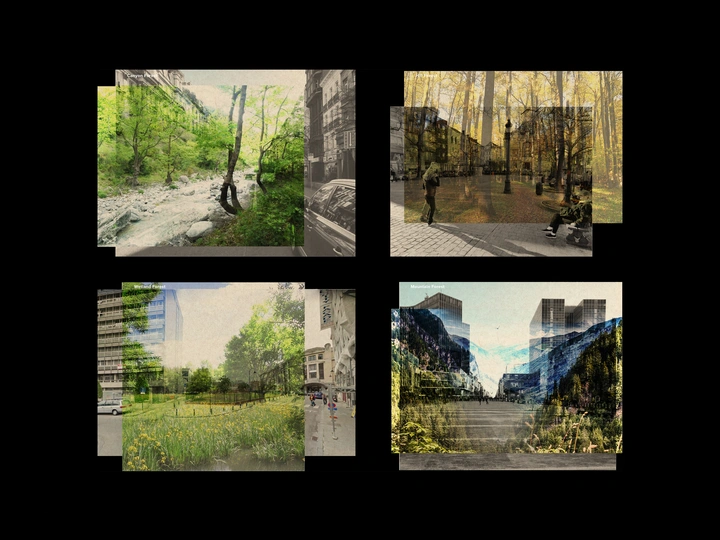Trees First | The Public Spaces of the Forest-City

Jean-François Gauthier is a landscape architect and founder of SYLVA Landscape Architecture & Urban Forestry. In his practice, he develops a fascination for forest ecology, its applications in urban environments and the design of socially inclusive public spaces around nature in the city.
With the research ‘Trees First’, he explores the system and possibilities of the urban forest; focusing on trees in the city as a starting point for better public space design. Using various mixed-media techniques, he aims to visualize what a forest can look like in the public domain and help municipalities imagine the future of urban nature.
Next, the ‘trees first’ methodology is currently being tested in the Laak district of the municipality of The Hague with the realisation of built urban forest pilots. In these projects, a flexible collective of participants is brought to improve the green, public space in the neighbourhood and come-up with custom-made solutions per location, from design and participation to realisation and maintenance of ‘urban forests’.
Jean-Francois is also involved in education and is currently coordinator for the Pre-Master & Minor Landscape Architecture at Academy of Architecture in Amsterdam.
As 70% of the world population is expected to live in cities by 2050, a radical approach towards cityscape is needed to allow citizens to access nature in their daily lives. Tomorrow, we must introduce forests in our cities rather than planting solitary trees. We will receive great benefits in return such as improved public health and climate change adaptation. With 'Trees First', I propose to develop a new design language for the environmental challenges of the 21st century. It is a design methodology that I developed theoretically at the Academy of Architecture in Amsterdam and that I later tested locally in Den Haag with the realisation of built pilot projects. In these "living-labs", a transdisciplinary project team is initiating, implementing and analysing symbiosis between soil organisms, trees, and structured woodlands as a starting point for better design of public spaces. The LINA framework is an opportunity to test further this methodology and craftsmanship in the context of another European city, for example in the form of workshops, tree planting actions and design research: a learn-by-doing approach to imagine the future of urban nature. How to develop new urban typologies in which trees play a central role, combining design, place making, participation and the implementation of good growing conditions for trees that will grow old and benefit all? Key themes such as: habitat (living urban space and ecological environment), co-creation, monitoring and maintenance can be starting points for debates and for developing knowledge and new bridges between the different design disciplines shaping the future of our city. Bringing the forest back into our cities requires innovative design approaches that can come in many different shapes and sizes. The LINA platform is a chance to bring together people from different disciplines and share a new attitude for a new kind of design language, in which trees are the protagonists for poetic and innovative public spaces.